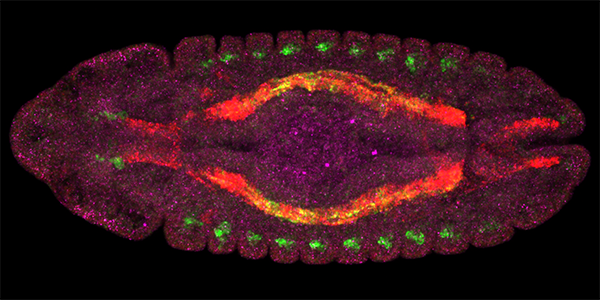New insights in biology show that food is informational and can directly impact and even control the expression of your genes. The implications of this discovery are profound, and have both a light and dark side in need of deeper exploration…
A new study published in the journal BMC Genetics entitled, “Plant miRNAs found in human circulating system provide evidence of cross kingdom RNAi,” reveals that powerful little diet derived nucleic acids known as microRNAs (miRNAs), from commonly consumed plants, are present within the human circulatory system in what appear to be physiologically significant quantities. MiRNAs are comprised of ~ 22 nucleotide single strand non-coding RNAs, which regulate protein coding gene expression by interfering with messenger RNA’s ability to transcribe DNA into protein. This is why miRNAs are sometimes called RNA interference molecules.
The study found,
“…abundant plant miRNAs sequences from 410 human plasma small RNA sequencing data sets. One particular plant miRNA miR2910, conserved in fruits and vegetables, was found to present in high relative amount in the plasma samples. This miRNA, with same 6mer and 7mer-A1 target seed sequences as hsa-miR-4259 and hsa-miR-4715-5p, was predicted to target human JAK-STAT signaling pathway gene SPRY4 and transcription regulation genes.”
This discovery has profound implications, as the human JAK-STAT signalling pathway has a wide range of potential downstream effects. In fact, JAK-STAT transmits information from extracellular chemical signals to the cell nucleus resulting in DNA transcription and expression of genes involved in immunity, differentiation, proliferation, apoptosis — all of which relate to cancer risk and oncogenesis. But this is just the tip of the miRNA iceberg. There have, in fact, been hundreds of these miRNAs identified in commonly consumed foods in the agrarian diet, and they appear to have the ability to match up with hundreds of human gene targets. The implications of this are profound, if not possibly devastating when it comes to GMO food technology.
It is now widely accepted among conventional biologists that miRNAs regulate most of the protein coding genes in mammals. In fact, the profound difference in complexity between higher life forms such as humans relative to, say, earthworms, is attributable to the higher level of RNA complexity within the so-called ‘dark matter of the genome’ (the ~ 98.5% of the human genome that does not code for proteins).
But what research like this brings to the table is the even more provocative possibility that our genetic and epigenetic wellbeing may be wholly dependent on miRNAs existing outside of us within the gene-regulatory miRNAs embedded within our diet.
Can you imagine the difference between an evolutionarily conserved ancestral diet and a modern one comprised of synthetic components and highly processed GMO cereal grasses?
The New Epigenetic/Nutritional Paradigm: Cross-Kingdom Communication
The idea that the plants and animals we eat contribute to modulating the expression of our genome is known as cross-kingdom or inter-species genentic communication, and represents a significant departure from the classical view that the genetic infrastructure of species were closed off, hermetically sealed within the cell nucleus, and could not be accessed epigenetically from the outside in. We’ve moved from this atomistic, monadistic view to an open access one, where miRNAs operate like software upon the hardwired protein-coding sequences within a species’ genome, making for a much more complex and interdependent web of relationships, reminiscent of the Gaian concept of a biospheric interconnectivity between all the biotic elements of the Earth. As I discuss in another article,
“…this more “open access” model would permit species to alter and affect another’s phenotype in real-time, along with potentially altering its long-term evolutionary trajectory by affecting epigenetic inheritance patterns. This speaks to a co-evolutionary and co-operative model, with all areas of the tree of life, co-developing in a highly complex and seemingly highly intelligent, carefully orchestrated manner.”
And so, if plant derived miRNAs can survive cooking and digestion, as appears to be the case, and can accumulate in physiologically significant quantities, they will therefore alter gene expression, introducing the novel concept that mammalian genomes may have, in fact, evolved to outsource some of their regulation to nutrigenomic dimensions within their dietary milieux.
This, of course, has profound implications, such as validating the concept that an evolutionarily appropriate diet — e.g. Paleo diet — would help to assure the optimal expression of the human genome. Conversely, the use of RNA interference technology by biotech corporations, such as Monsanto/Dow’s newly EPA approved RNAi corn, could have biologically devastating consequences to the health and wellbeing of those fed or exposed to its altered miRNA profiles. To learn more about this concerning possibility, read (and please share) my report: The GMO Agenda Takes a Menacing Leap Forward with EPA’s Silent Approval of Monsanto/Dow’s RNAi Corn


